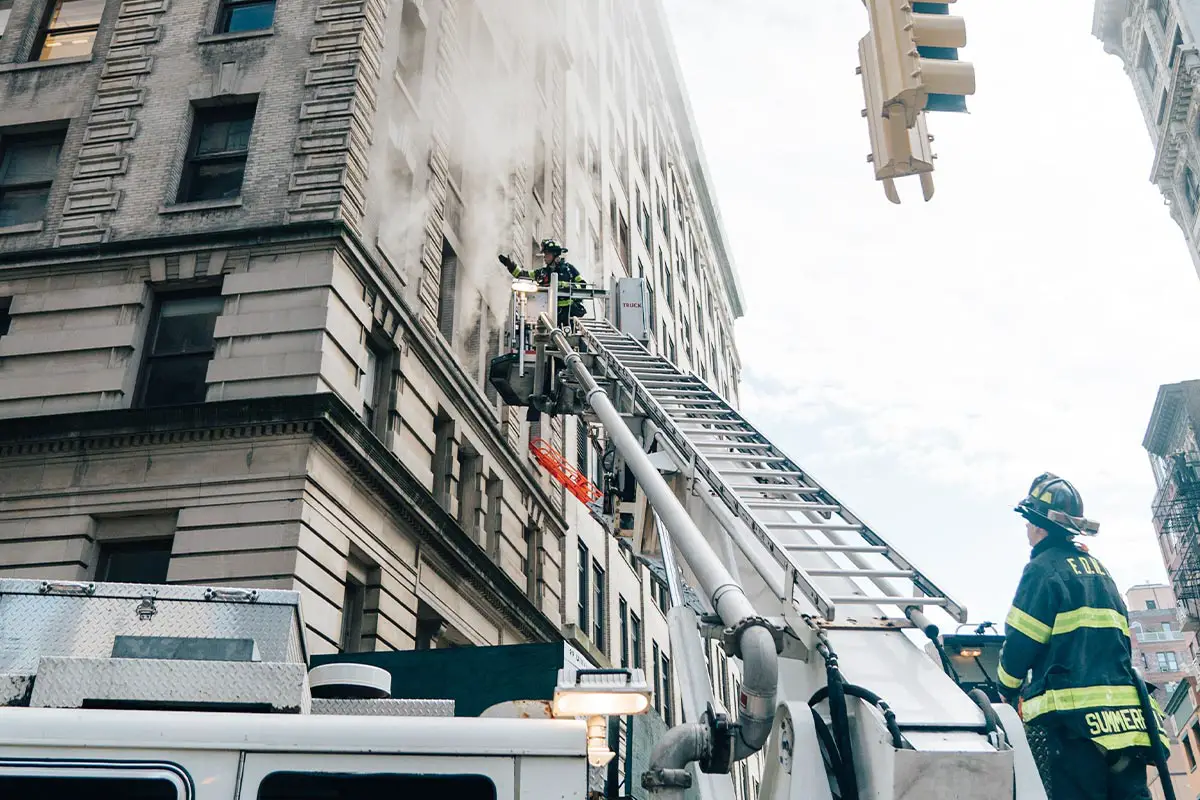Emergency preparedness is something all business owners need to consider. Since disasters don’t strike often, it’s easy to think that you don’t need an emergency plan. Ideally, you’ll never experience an emergency. But if you do, it can be disastrous if you’re not prepared.
The Institute for Business and Home Safety says that 25% of businesses don’t recover after a major disaster. However unlikely an emergency may be, that’s a risk you can’t afford to take. A disaster could endanger your employees and ruin your business, so it pays to prepare a plan to protect your business.
Here are seven steps you can follow to protect your business in an emergency.
1. Determine what risks you face

The first step in preparing for an emergency is determining which emergencies you should prepare for. Some threats, like cybercrime, affect all companies, but not everything is a relevant hazard to everyone. Depending on your location and business type, you’ll face different risks.
If your business is on the West Coast, you should probably consider earthquake and wildfire preparedness. If you’re in the Southeast, you should think about having a hurricane plan. Analyze the kinds of disasters that occur in your area to see what your emergency preparedness needs are.
Natural disasters aren’t the only emergencies you should consider. If you work with flammable materials, you should have a fire plan, and if you’re in finances, you should plan for robberies. Only when you understand the risks you face can you make an effective response plan.
2. Establish an emergency communication plan
No matter what kind of hazards you may encounter, maintaining communication is vital. If you can’t inform employees, partners, and clients about the situation, it could lead to chaos. Remember that some cases may make your usual communication tools unusable, too.
You could have a dedicated messaging service or pre-set text or email formats for emergencies. Since 79% of the population uses social media, you can even use that as a communication tool. As long as you deliver critical information as clearly and quickly as possible, any method is legitimate.
Some emergencies warrant contacting authorities like the police. If that’s the case, you should have a designated employee whose job is to call them.
3. Create a response and contingency plan
Once you know what risks you face and how to communicate, it’s time to make a response plan. For many emergencies, you’ll need a plan to evacuate, including evacuation routes and meeting places. It helps to designate specific employees as safety officers or leaders to maintain order in a stressful situation.
What your response plan looks like will vary depending on the type of emergency. You’ll need more than one since things like a fire and a cybersecurity breach require different actions. You should also have backup plans for every scenario to prepare for unforeseen situations.
Your preparations should include a contingency plan for continuing work in different circumstances. You may need to stay out of the building for a while, so you should have a system to keep working without it.
4. Ensure you have appropriate equipment onsite
How fast you can respond to an emergency depends on the tools you have available. You should keep any useful items like fire extinguishers, flood barriers, and medical kits in your workplace. What you need depends on your unique situation, so analyze your risks before gathering equipment.
Several types of emergencies can jeopardize your power, so you may want to have a backup generator. Some businesses have found that one generator isn’t always enough, since the hazard that downed their primary power affected their backup too. If you have a high chance of encountering destructive natural disasters, you may need a couple of reserve power options.
5. Purchase appropriate insurance
No matter your preparation measures, some damage is unavoidable. To minimize the cost of a disaster, you should consider getting insurance to cover your most significant hazards. You don’t need all types of insurance, but you should address whatever events are most likely.
You may think that your business insurance covers you, but this may not be the case. Some events, like floods, require a separate policy. Double-check with your provider to see what events your policy covers and what extra coverage you may need to buy.
Insurance may seem like an unnecessary expense until disaster strikes. It’s better to have it and not need it than to need it and not have it.
6. Back up critical data
One of the most crucial considerations for emergency preparedness is backing up your mission-critical data. If you don’t have backups, a disaster could cripple your business, or at least make it more challenging to recover. Anything from a cyberattack to a natural disaster can jeopardize your data, so you need backups to protect your business.
According to a 2019 survey, a likely 84% of all organizations store data backups on the cloud. Cloud storage enables more flexible access, so it’s an excellent option for backups. Remember, though, that disaster can strike data centers, too. You should have multiple storage spaces for critical data.
If you have both digital and physical backups, you’ll be safer from a broader range of threats. You don’t need multiple backups for all of your data, but it’s a good idea for your most crucial files.
7. Communicate and practice your plan
Finally, once you have all of your plan mapped out, you need to communicate it. Each of your employees should know what to do in any given emergency scenario. Training everyone ahead of time will ensure your plan goes smoothly if disaster strikes.
Explaining your protocol is good, but practicing it is even better. If you hold emergency drills at least annually, then it will help everyone remember what to do. These practice runs may also help you see new vulnerabilities you need to address.
Keep your employees and assets safe
It may be uncomfortable to think about worst-case scenarios, but it’s necessary. If you plan for emergencies before they happen, you can avoid a lot of damage, both to your business and your employees. Disaster preparedness isn’t easy work, but it can save money and lives.
Do you have your own business? Do you have plans to protect your business from emergencies? What do you think about the tips above? Let us know in the comments below or on Twitter, Facebook, or MeWe.
Last Updated on February 3, 2021.











